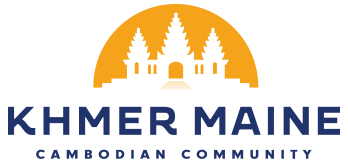

Support Capital Campaign for Maine's First Asian American Community Center
Imagine a place where Maine’s Asian American and Pacific Islander (AAPI) community can thrive together—a place that celebrates cultural heritage, builds bridges across differences, and ensures no one is left behind. We are creating that place: Maine’s first Asian American Community Center.
For too long, Maine’s growing AAPI community has faced unique challenges—language barriers, limited access to healthcare, gaps in legal services, and isolation from one another due to the lack of a centralized space. Despite contributing richly to Maine’s cultural and economic landscape, many AAPI Mainers remain invisible in discussions about equity and community well-being. The statistics tell a sobering story:
- 29% of Asian American adults in Maine have limited English proficiency, making it harder to access vital resources.
- 13% live in poverty, and 1 in 10 lack health insurance.
- Over 1,000 AAPI individuals in Maine lack broadband access, cutting them off from opportunities many of us take for granted.
But statistics alone don’t capture the resilience, creativity, and hope within Maine’s AAPI community. That’s why we’re building a Community Center that will transform challenges into opportunities. Located on 30 acres of land generously offered by Watt Samaki, a Cambodian community partner in Westbrook, this center will be a beacon of collaboration and empowerment.
A Vision for the Future
This Community Center will serve as a hub for Maine’s AAPI population, providing essential services like legal aid, translation assistance, citizenship support, and access to broadband. It will also foster connection among Maine’s diverse ethnic communities, enabling organizations to share resources and amplify their impact. This space will be a home for celebrations, cultural events, and educational programs that highlight the rich tapestry of AAPI heritage.
By uniting Maine’s ethnic community-based organizations (ECBOs), this center will empower thousands of individuals to build better lives for themselves and their families. It will give visibility to the overlooked and strength to the underserved.
Why Now?
The time to act is now. Maine’s AAPI population has grown by 113% since 2000, reaching over 26,500 individuals as of 2022. With this growth comes an urgent need for a space where the community can organize, support one another, and thrive together. Currently, many AAPI organizations in Maine are working tirelessly but separately, hampered by limited resources and no shared infrastructure. The Community Center will change that, enabling collaboration that magnifies their efforts and impact.
How You Can Help
Building this center is a monumental task, and we can’t do it without your support. Your donation will help us:
- Construct the physical space that will house critical services and cultural programs.
- Provide essential resources like translation services, legal aid, and healthcare access.
- Create opportunities for AAPI Mainers to connect, celebrate, and build a stronger future together.
Every dollar you give brings us closer to a Maine where everyone belongs and thrives. This isn’t just an investment in a building; it’s an investment in people, in culture, and in community. Together, we can build a space that honors the past, addresses the present, and creates a brighter future for all.
Join us in making this vision a reality. Donate today to help build Maine’s first Asian American Community Center. Because when we come together, we all rise.

Our donors
KB
Kate Beever
donated
$100
R
Rosie
donated
$50
T
Tracy and Bob
donated
$50
HO
Hal Ostorm
donated
$88
Happy Birthday Marpheen from YuJi Kimberly and Hal
E
Elizabeth
donated
$50/M
M
Maggie
ZS
Zach Schwartz
donated
$50
An amazing and important cause!
J
Joshua
Everyone deserves a reprieve from general society and the hostility towards minorities in our current political climate. My girlfriend often feels afraid and alone living in a predominantly white state. Having a gathering place for AAPI diaspora that helps them build community and belonging is an excellent idea. I wish you all the best in your endeavor!
M
Maggie
donated
$500
My family emigrated from Taiwan to Honolulu in the early 60s. Despite looking like my peers, I experienced racism as an immigrant in Hawaii. I attended college and graduate school in Portland, Oregon at a time when people of color were few and far between, My move to Northern Maine in the late 90s provided the greatest shock of all, but despite the negative comments, unwanted attention, and outright hostility--I have developed a deep attachment to Maine and I am proud to support a group working to ensure that others can be proud of their identities as they help to bring Maine closer to the admirable American ideals of diversty and inclusion.
LC
Lindsay Conrad
donated
$100